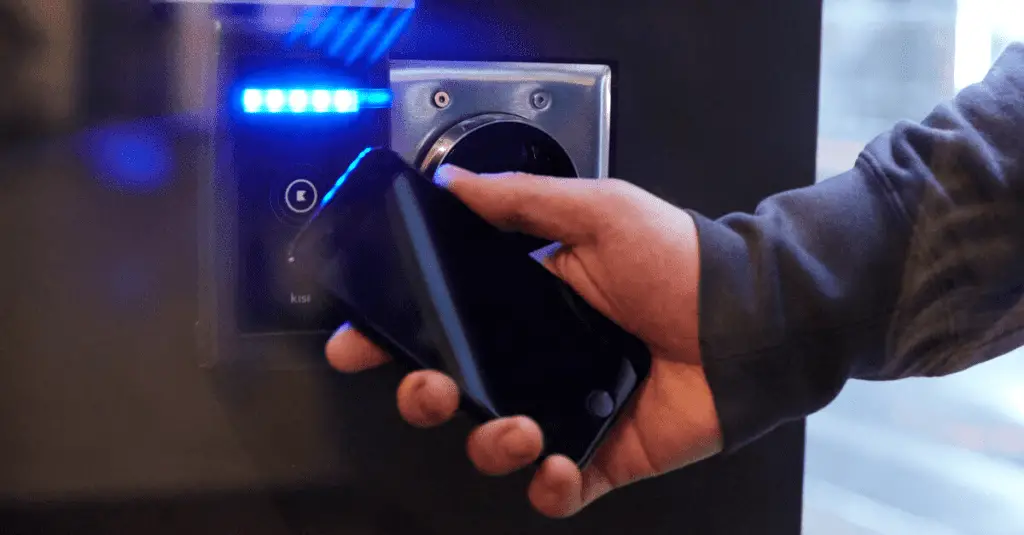In the last decade, we’ve seen a radical shift in how we secure our spaces. Enter commercial keyless entry systems. These high-tech devices allow access without physical keys, leveraging technology like PINs, biometrics, or mobile apps.
Their popularity is skyrocketing in both residential and commercial properties, thanks to their enhanced security and convenience over traditional locks. Let’s dive more!
Integrating keyless entry systems into architecture and design
As we dive into the age of digitization and advanced technology, the integration of keyless entry systems during the design stage of buildings becomes increasingly crucial. Collaboration between architects and designers is key to ensuring seamless integration without detracting from the aesthetic or functional value of a space.
Take, for example, the modern office building, now often equipped with biometric access control. According to a report by Grand View Research, our global biometric system market size is forecasted to reach $150.58 Billion by 2030, indicating its rising acceptance. Another prime example is the residential apartment complex utilizing mobile app-based entry systems, which are projected to witness a growth rate of 32% from 2021 to 2026.
Both examples underscore how successful integrations can simultaneously enhance security, elevate user experience, and preserve design integrity.
Types of access control readers
Access control readers play a vital role in modern security systems. Their applications span multiple sectors, from residential and commercial buildings to high-security facilities. However, they are not created equal. There’s a diverse variety of readers, each designed for a different purpose, and choosing the right one requires careful consideration.
1. PIN code readers
These are the most basic type of access control readers.
- They require users to enter a unique numerical code or PIN.
- According to a survey by ADT in 2020, approximately 38% of the buildings use PIN code readers.
- While they offer a degree of security, their vulnerability lies in the fact that codes can be shared or stolen.
2. Biometric readers
Biometric readers are on the cutting edge of access control technology.
- These readers use unique physiological characteristics like fingerprints, facial recognition, or iris scans for authentication.
- While high in security, biometric readers can be more complex and expensive to install.
3. Smartphone-based readers
Smartphone-based readers represent the future of access control.
- Instead of a physical key or card, these systems use the users’ smartphones as keys.
- A 2022 report by HID Global stated that smartphone-based readers are on the rise, with about 20% of the access control market using this technology.
- These systems offer high convenience and scalability but rely heavily on users’ smartphones, which could be a drawback for some.
The right access control reader will largely depend on the specific security needs of the location, the budget for the security system, and the compatibility with existing systems.
- Security needs: Biometric readers offer the highest security level and are ideal for sensitive locations such as data centers, government buildings, and research facilities.
- Budget: PIN code readers are typically the most affordable but offer less security. On the other hand, biometric readers, while providing superior security, come with higher installation and maintenance costs.
- Compatibility: Consider how the new reader will integrate with existing keyless entry systems or security infrastructure.

Aesthetic considerations for keyless entry systems
Design matters, even with keyless entry systems. The look of access control readers and hardware can significantly impact the aesthetic of a space.
A survey by ASSA ABLOY in 2022 found that respondents considered the aesthetic impact of security systems during installation. Therefore, it is crucial to select a system that complements your space’s overall design theme.
These are the prominent trends.
- Minimalist readers: With the rise of minimalist interior design trends, sleek and compact access control readers have become popular. They suit modern and contemporary spaces, enhancing the clean lines and uncluttered look.
- Customizable readers: Some manufacturers are offering customizable readers, allowing businesses to match their access control hardware with their branding or interior color scheme.
- Invisible installation: For those prioritizing aesthetics, some systems are designed to be nearly invisible, blending into the wall or door seamlessly.
Enhancing security with keyless entry systems
Keyless entry systems offer more than just convenience—they can significantly improve a property’s security. They allow for controlled access, detailed access logs, and quick deactivation of lost or stolen ‘keys.’
Consider integrating additional security features. For instance, coupling keyless entry with alarm systems or video surveillance can enhance security even further. Regular maintenance and software updates are also crucial for keeping your system secure and efficient.
Conclusion
The blend of architecture, design, and keyless entry systems is a game changer. With careful planning, these systems can boost security, enhance convenience, and still look great. Whether you’re designing a new space or upgrading an existing one, consider making the switch to keyless.
Keen on learning more? Dive deeper, explore the varieties of keyless entry systems and access control readers, and uncover the best fit for your needs. The perfect balance of design, functionality, and security awaits!





